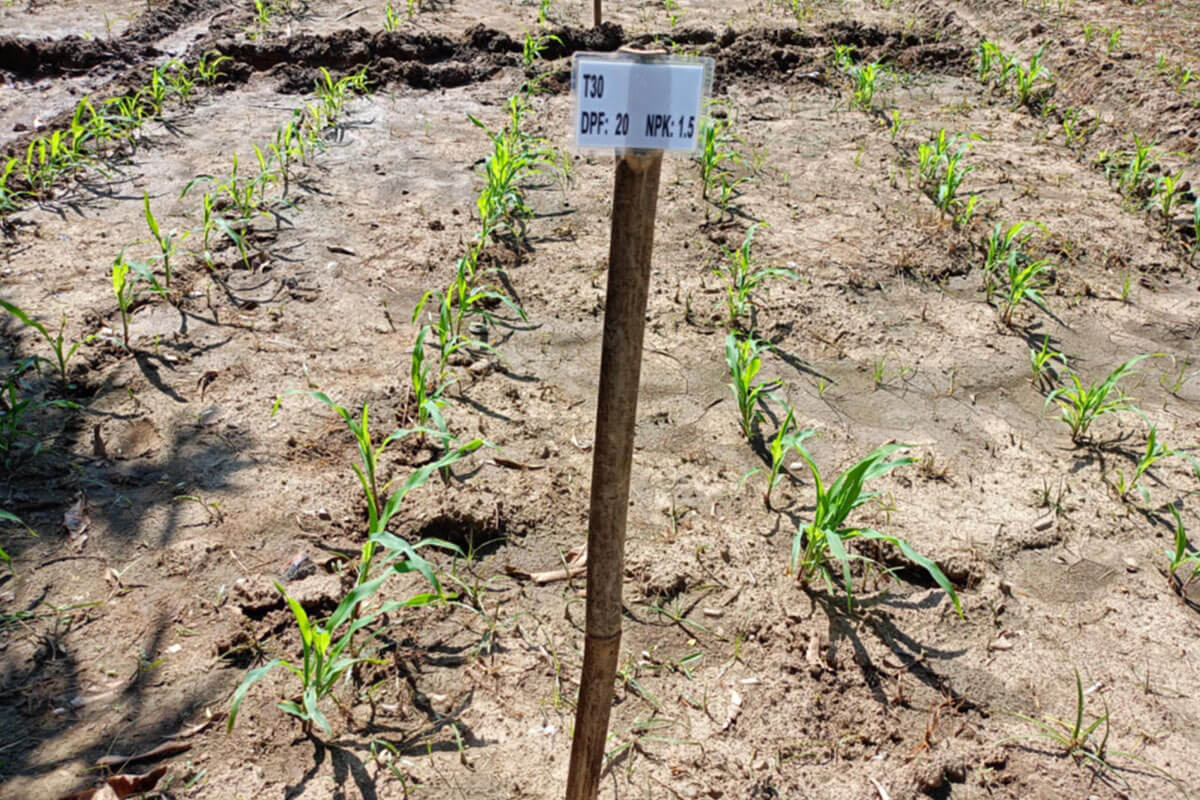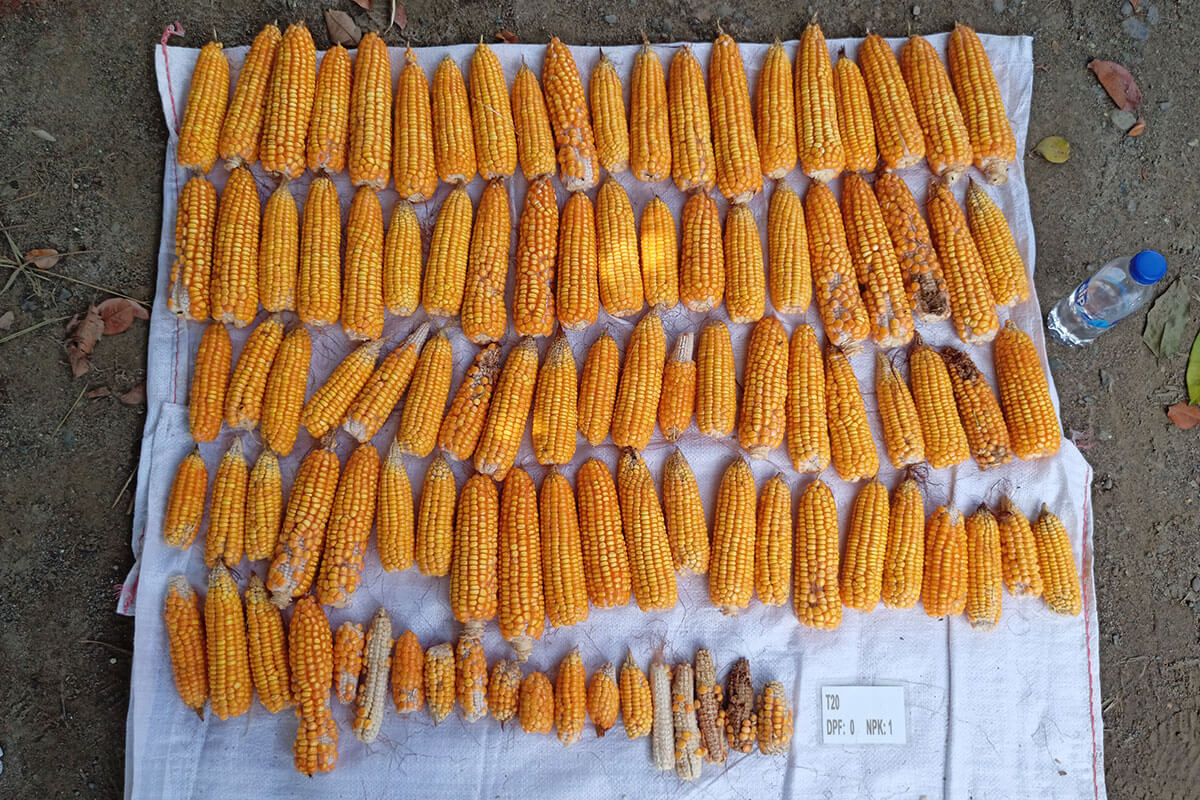The purpose of the experiment is to:
- Determine the appropriate dosage rate of the Dumangan Prime fertilizer for crop production
- Determine the frequency of the Dumangan Prime fertilizer application for crop production
Legends:
- DPF – Dumangan Prime Fertilizer, NPK – Traditional fertilizer such as Nitrogen, Phosphorus and Potassium;
- Unit for DPF is kg/hectare. I.e 30kg/hectare (recommended dosage), 15kg/hectare (half of recommended dosage), 10kg/hectare (1/3 of recommended dosage).
- Unit for NPK is the multiple of the recommended rate. I.e. NPK:1 is the recommended dosage, NPK:0.5 is half of the recommended dosage.
June 8, 2024
On June 8th, a rice field and corn field in Nueva Ecija province was fertilized in the presence of a third party with the help of Dr. Constancia C. Dacumos, an Agriculturist, Soil Technologist, and a former professor in CLSU This is the interim comparative effect just received.

T15 DPF:30 NPK: 0.5

T30 DPF:20 NPK:1.5

T30 DPF:20 NPK:1.5

T1 DPF:0 NPK:0.5

T3 DPF:0 NPK:1.5

T61 DPF:25 NPK:0.5
August 1, 2024
Visiting the third-party corn experimental field in Nueva Ecija Province on August 1st.
According to third-party observations, the standard dosage of nitrogen, phosphorus, and potassium combined with 20 kilograms per hectare of nutrient fertilizer currently shows the best results.








At the site, the tallest plants were selected from both the experimental field and the comparison field for comparison. The plants in the experimental field were significantly taller (226 cm vs. 189 cm), had thicker stems (2.8 cm vs. 1.9 cm), more developed root systems, more aerial roots, more leaves (14 leaves vs. 11 leaves), greener leaf color, and wider leaf blades. Additionally, the plants in the experimental field had already started tasseling and developing corn ears.
August 22, 2024
On the 71st day after sowing, according to third-party observations, the best-performing plots were those treated with our company’s nutritional fertilizer at 20 kilograms per hectare (recommended application is 30 kilograms per hectare) along with the usual amounts of urea and complete fertilizer. The plots with DPF showed a significant increase in height, number of corn ears per plant, with each plant producing 2-3 ears, and the ears were larger in size. Also, it is noticeable that the corn with DPF has longer corn silk which can be an indication of good kernel set or cobs compared to the control field. In contrast, most corn in the control plots only has one ear. The third-party predicts that the yield in this experimental field may be at least 30% higher than that of the control field.






September 26, 2024 – Harvest Day
Harvesting of corn in the city of Muñoz in Nueva Ecija. Upon checking the dry yield of corn kernels, the plot with 20 kg of DPF/ha with 120-60-60 of NPK/ha was 56.22% higher compared to the plot with 0 kg of DPF/ha with 120-60-60 of NPK/ha.



Therefore, the best treatment is 20 kilograms of DPF per hectare in combination with 120-60-60 of NPK which yielded 7.28 tons per hectare compared with the control which yielded only 4.66 tons per hectare of corn kernels.



